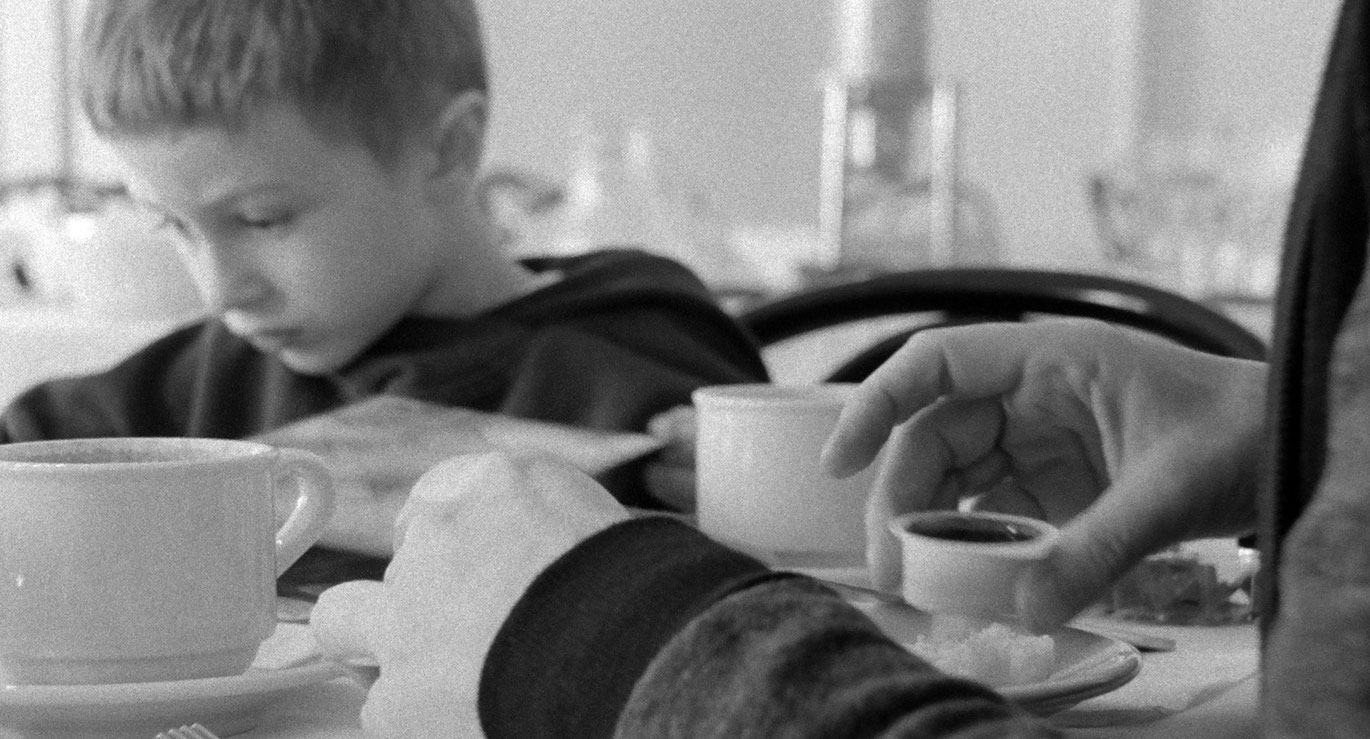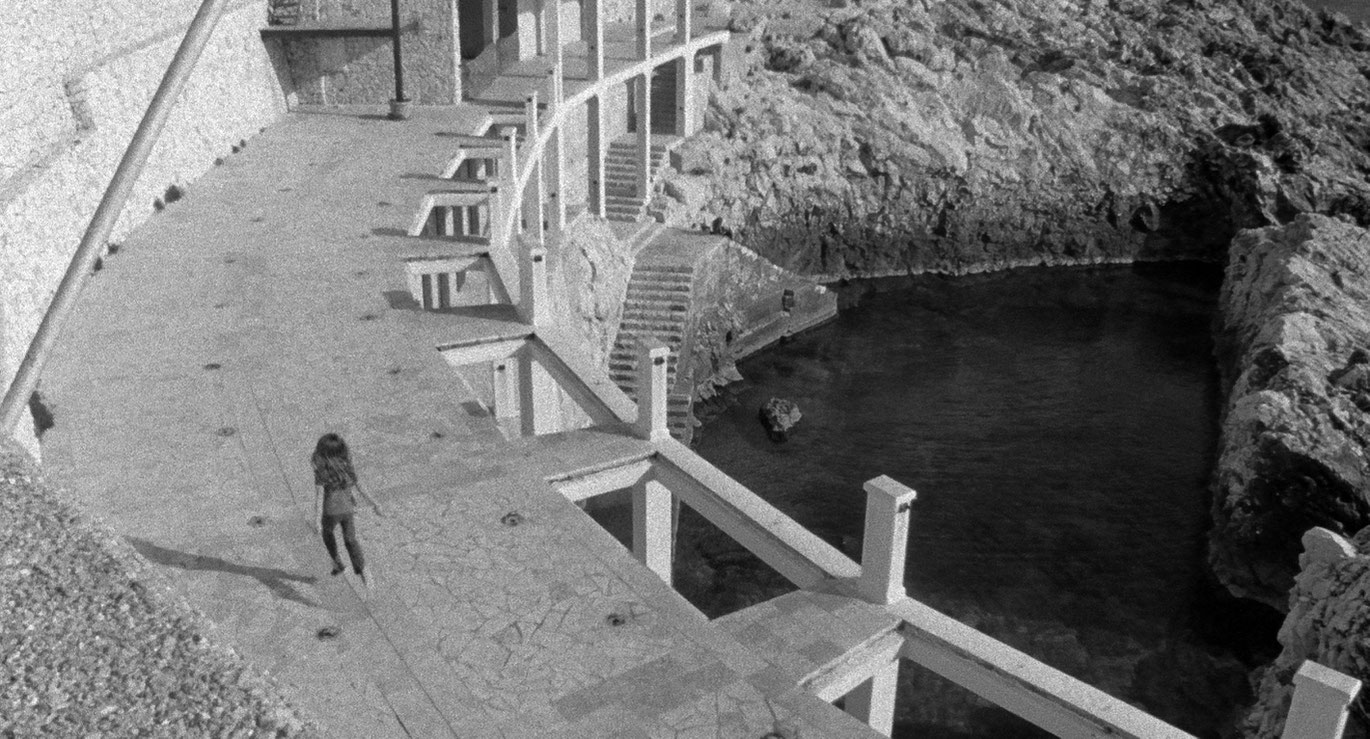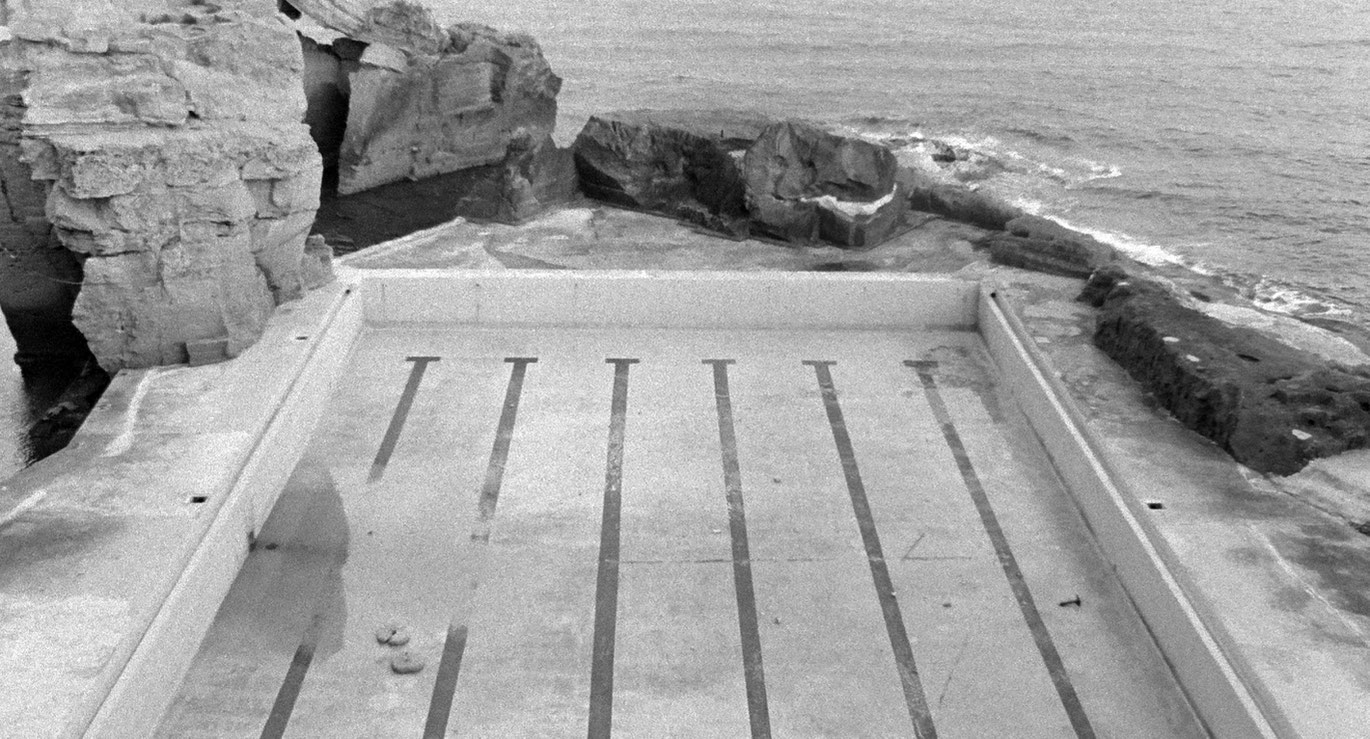Stabat Mater
Wordless hotel guests during the cold off-season, bizarre rock formations and sea cliffs, all accompanied by a story of great familial doom. The Stabat Mater or, "Sorrowful mother standing," relates directly to Josef Dabernig´s film of the same name that artistically interweaves apparently disparate elements. First, there is the seemingly clinical breakfast hall of an Apulian health spa populated by guests who neither speak nor otherwise communicate, caught like marionettes in their ever-repeating gestures. The sleek architecture plays its own part, casting a rigid net of fluted columns and other ornaments over the lethargically persevering group. Liveried waiters minimistically polish around on blank surfaces. The absurdist non-happening is underscored by an organ étude by Christoph Herndler, based on Schubert´s Stabat Mater.
Meanwhile, exteriors offer highly contoured views of virtually sculptural cliff formations constituting a huge natural bathing pool. Mournful sounds of the organ music time and again lap into vistas of the cloudy seascape, otherwise a narrative is heard that is told off-screen, about fateful events at a cattle ranch in Uruguay. Written by Bruno Pellandini it reports on a drought of many months that threatens the survival of a way of life, and the story ranges from the displacement of wondrous incidents to implying absolute catastrophe. Pellandini´s elliptically structured story shifts the interior/exterior dialectic of the film images into a curious limbo, indeed creating imaginary connections image and sound alone would not reveal. It can only be circuitously surmised, that however empty and distant the setting and its inhabitants seem - the pain, the misery is always closer than you think. (Christian Höller)
Translation: Eve Heller
Stabat Mater
2016
Austria
16 min



